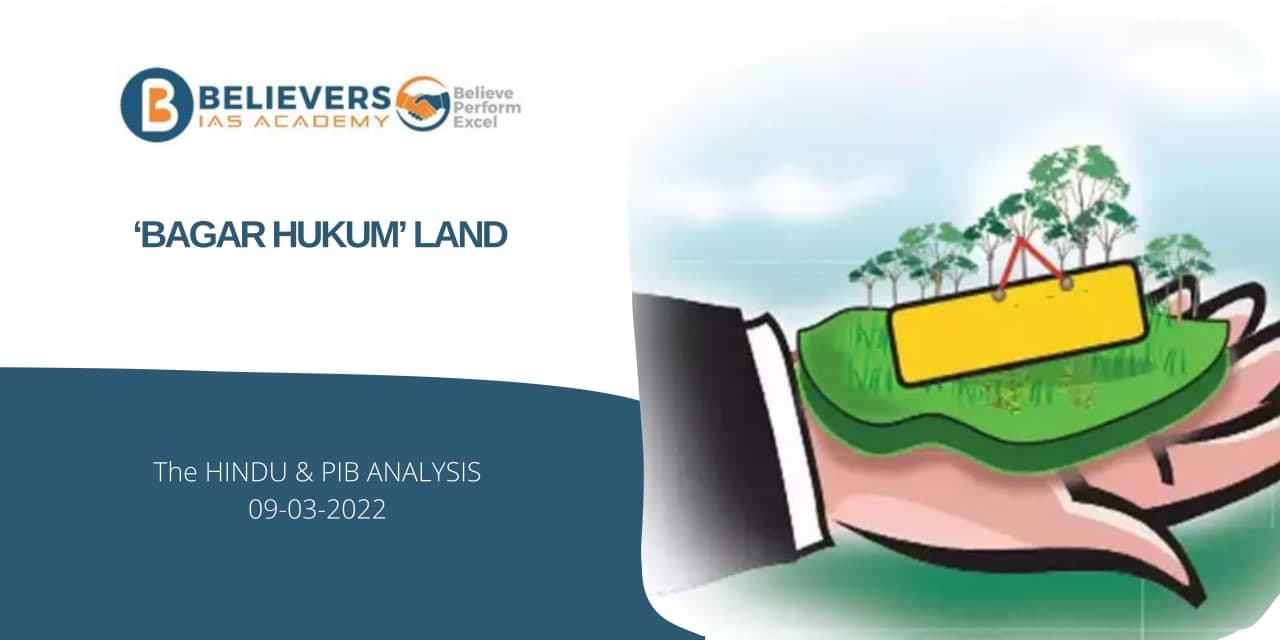‘Bagair Hukum’ land
Context:
- Following the incident of a woman ending her life after Forest officials in Mundaragi taluk of Gadag district cleared crops on encroached forest land (‘bagair hukum’) and many farmers filing petitions in courts seeking rights for cultivation on such land, the State Government on Tuesday informed the Legislative Assembly that the Karnataka Land Revenue Act, 1964, would be amended and the words “land grabbing” would be deleted to authorize farmers to cultivate land in forest areas.
What is bagair hukum?
- ‘Bagair hukum’ is a piece of government-owned/forest land that has been cultivated by the farmers over the years without having any formal and documented ownership rights over it
Background:
- Land policy in India has been a major topic of government policy discussions since the time prior to Independence from British rule.
- The renewed interest in land issues stems from the perceived impact of liberalization and opening up the economy.
- Tenancy, land ceiling and land administration are being revisited with a new perspective.
- Among the issues under renewed focus, legalizing tenancy, revising the ceiling limits, quality of land, meeting the challenge of miniscule holdings that are a consequence of marginalization and land administration are dominating the debate
- The land-revenue system implemented by Todar Mal during Akbar’s regime can be traced as the possible beginning of systematic efforts to manage the land.
- This method incorporated measurement, classification and fixation of rent as its main components.
- Under the various pre- British regimes, land revenues collected by the state confirmed its right to land produce, and that it was the sole owner of the land.
British rulers took a cue from this system and allowed the existence of non cultivating intermediaries.
Source: THE HINDU




